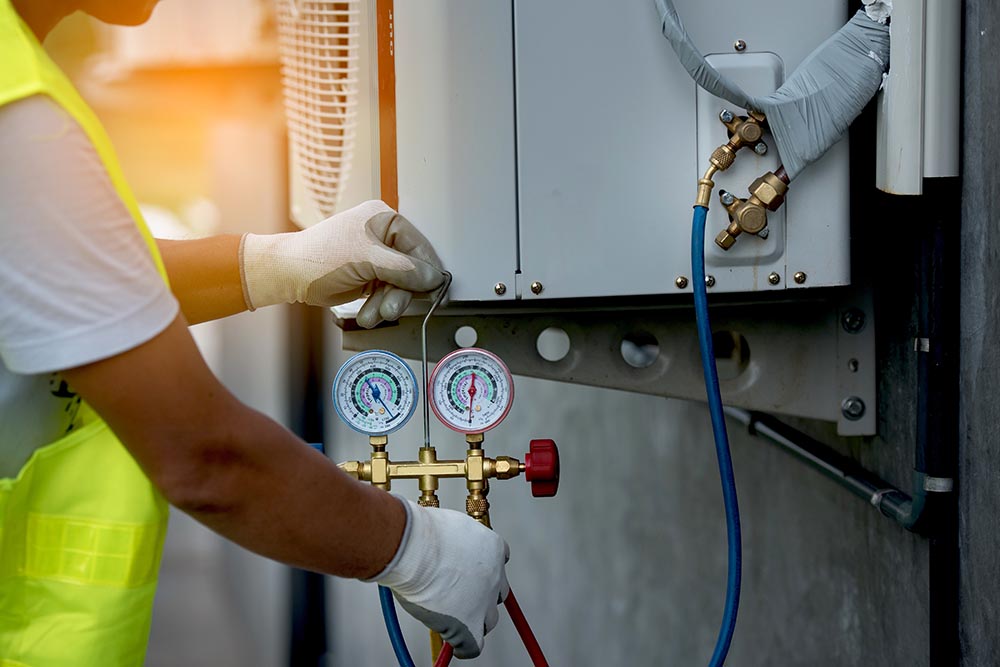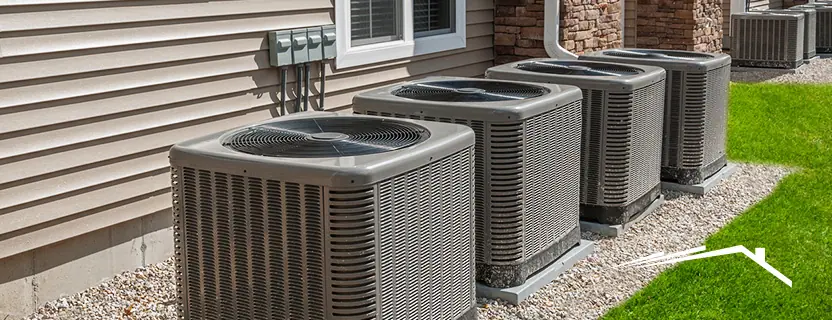Top Strategies for Enhancing Comfort with ductless mini splits
How a Heatpump and Heating System Interact to Enhance Your Home's Heating Performance
Comprehending how a heatpump and heating system interact is important for homeowners looking for effective home heating options. Each system has its strengths, giving a balanced strategy to home comfort. The heatpump masters moderate temperature levels, while the furnace provides rapid warmth throughout severe cold. This harmony not only reduces power costs however also improves the life-span of both appliances. What factors affect this collaboration, and exactly how can property owners optimize their benefits?
Recognizing Heat Pumps: Just How They Work
Although many individuals may be not familiar with their internal functions, heatpump play a crucial function in contemporary heater. These gadgets operate by moving warm from one location to one more, making use of the principles of thermodynamics. In cooler months, a warm pump removes heat from the outdoors air, ground, or water, and transfers it indoors to heat the home. On the other hand, during warmer months, it can reverse the procedure, functioning as an air conditioner by eliminating heat from inside to the outside.Heat pumps consist of an evaporator, condenser, compressor, and development valve. The cooling agent within the system takes in warm as it evaporates at low temperatures and pressures. The compressor after that enhances the pressure and temperature of the refrigerant, enabling it to launch warmth as it condenses. This efficient process can considerably reduce energy consumption compared to conventional home heating techniques, making warmth pumps a lasting choice for climate control in homes.
The Role of Heating Systems in Home Heating
Heating systems play an essential role in home heating by offering a trusted resource of heat throughout the cooler months. They run by creating warmth via burning or electrical resistance, dispersing it throughout the home by means of ducts or radiant systems. The efficiency of a furnace is commonly determined by its Annual Fuel Usage Effectiveness (AFUE) rating, which indicates how effectively the unit transforms gas right into heat.Furnaces can use various energy resources, consisting of natural gas, oil, gas, or electrical energy, enabling property owners to choose one of the most appropriate option for their demands. Unlike warm pumps, which may battle in severe cool, heating systems maintain regular performance, ensuring that interior temperatures stay comfortable no matter outdoor problems. Additionally, modern-day furnaces usually come furnished with advanced modern technology, such as clever thermostats and variable-speed blowers, improving their performance and responsiveness. This flexibility makes heaters a vital component in all-inclusive home heating strategies.

Advantages of Making Use Of Both Solutions Together
Integrating the strengths of both heaters and warm pumps can lead to a much more reliable and effective home heating remedy. Utilizing both systems permits property owners to make use of the heat pump's power performance during milder temperature levels while relying upon the furnace for even more severe cold problems. This twin approach can substantially decrease power costs, as warm pumps eat much less electricity than standard home heating methods when temperatures are moderate.Additionally, utilizing both systems with each other can boost convenience degrees in the home. Heatpump can offer constant, also home heating, while heaters can quickly raise ambient temperatures when needed. In addition, the integration of both systems can extend the lifespan of equipment by decreasing deterioration on each device, as they share the work. Eventually, property owners can appreciate a balanced, economical home heating solution that adjusts perfectly to varying climate condition, ensuring a warm and inviting home throughout the winter months.
Just How Heat Pumps and Furnaces Complement Each Various Other
They develop a corresponding home heating system that makes the most of effectiveness and comfort when property owners incorporate warm pumps and heating systems. Heatpump operate by transferring heat from the outside air or ground, making them highly effective in moderate climates. They stand out during milder temperature levels, offering affordable heating. On the other hand, furnaces produce warm through combustion or electrical resistance, providing strong, immediate warmth throughout severe cool conditions.The combination of these 2 systems enables for vibrant modifications based on temperature level variations. Throughout warmer months or milder winter months days, the warm pump can take the lead, preserving power and decreasing prices. As temperature levels decline, the furnace can perfectly involve, making sure regular warmth throughout the home. This synergy not just maximizes power use but additionally enhances the life-span of both systems, as each device runs within its optimal performance variety. With each other, they develop a well balanced environment that adapts to differing environment needs.
Optimizing Performance: Tips for Homeowners
Home owners can improve their home heating performance via several functional approaches. Developing a regular maintenance routine, integrating wise thermostat innovation, and applying reliable insulation and securing solutions are essential steps. These actions not only enhance comfort however additionally reduce energy costs.
Routine Upkeep Set Up
To assure optimal heating effectiveness, establishing a regular maintenance timetable is crucial for any kind of home. Property owners ought to prioritize routine assessments of both heatpump and heaters to identify peak performance. This consists of altering air filters every one to three months, as clogged up filters can greatly reduce efficiency. In addition, organizing professional maintenance at least as soon as a year permits specialists to recognize and address possible problems before they intensify. House owners should additionally clean the warmth pump's outside device to stop particles accumulation that can hinder airflow. By adhering to a normal maintenance schedule, house owners not only enhance their home heating systems' performance however additionally prolong their lifespan, leading to greater convenience and lowered power costs throughout the chillier months.
Smart Thermostat Integration
Integrating a clever thermostat into a home heating unit can substantially boost energy effectiveness, particularly as it enables for exact control over temperature settings. These devices can discover the home owner's timetable and choices, instantly readjusting the temperature level to enhance convenience while minimizing energy use. For example, they can decrease home heating throughout times when the home is empty, minimizing unnecessary consumption. Many clever thermostats likewise offer real-time energy use data, enabling property owners to make informed choices regarding their heating habits. In addition, remote accessibility by means of mobile phone apps permits customers to readjust setups from anywhere, making certain the home is cozy upon return. On the whole, clever thermostat assimilation not just improves convenience however considerably adds to power cost savings and performance.
Insulation and Sealing Solutions
Smart thermostats play a vital role visit the site in power effectiveness, but their efficiency can be continue reading this greatly improved by proper insulation and sealing remedies. Property owners need to prioritize protecting wall surfaces, floorings, and attic rooms to lessen warm loss. Premium insulation products, such as spray foam or fiberglass, can significantly boost thermal resistance. Additionally, sealing spaces around home windows, doors, and air ducts prevents cold air infiltration and warm getaway. Weatherstripping and caulking are reliable approaches for addressing these leaks - heat pump replacement ooltewah tn. Normal examinations for air leakages, in addition to the usage of blower door examinations, can aid recognize trouble locations. By buying insulation and sealing, property owners can enhance the performance of their heating systems, ultimately causing lowered power usage and lower utility bills
Usual Misconceptions Regarding Warm Pumps and Furnaces
What mistaken beliefs surround heatpump and furnaces? Several people incorrectly believe that heatpump are inefficient in cooler climates. Actually, contemporary heat pumps are designed to run successfully also in low temperature levels, giving reliable home heating throughout winter months. An additional typical misconception is that furnaces are constantly a lot more efficient than warmth pumps. Nevertheless, this depends on the details power sources and performance ratings of the devices concerned. Some might also think that making use of both systems concurrently is unnecessary, however as a matter of fact, this mix can optimize heating performance, especially throughout extreme weather. Furthermore, people usually assume that warmth pumps require consistent upkeep, when truthfully, they have comparable maintenance requires to conventional heater. By unmasking these myths, property owners can make even more enlightened decisions concerning their home heating options, eventually leading to enhanced convenience and power performance in their homes.
Maintenance Considerations for Combined Solutions

Regularly Asked Concerns
Can Warm Pumps Work Effectively in Extremely Cold Climates?
Heatpump can battle in exceptionally chilly climates due to lowered effectiveness and warm extraction constraints. Improvements in technology have actually led to designs designed for far better performance in such problems, enhancing their stability in extreme environments.
The Length Of Time Do Warmth Pumps and Furnaces Commonly Last?
Warmth pumps generally last 15 to two decades, while heating systems have a life-span of 15 to thirty years. Normal maintenance can prolong their longevity, making sure efficient operation and lowering the requirement for early replacements.

What Is the Average Cost of Putting Up Both Equipments?
The typical cost of mounting both a warm pump and a furnace generally ranges in between $5,000 to $10,000 - heat pump installation ooltewah tn. Variables affecting this expense include system size, installment complexity, and local labor prices
Exist Tax Motivations for Using Energy-Efficient Heating Solutions?
Several house owners ask about tax obligation incentives for energy-efficient home heating systems. Numerous federal and state programs commonly supply debts or rebates, motivating the fostering of sustainable innovations to lower energy usage and advertise ecological responsibility.
Exactly how Do I Pick the Right Size Heatpump and Furnace?
Choosing the right dimension warmth pump and heater entails calculating the home's square video footage, taking into consideration insulation top quality, and assessing regional climate. Consulting an expert can assure ideal system performance and energy efficiency based on specific needs. heat pump service. Comprehending how a heat pump and furnace job with each other is crucial for homeowners looking for reliable home heating options. In chillier months, a heat pump removes warmth from the outdoors air, ground, or water, and transfers it inside your home to heat the living space. When property owners integrate heat pumps and heaters, they develop a corresponding home heating system that makes the most of efficiency and convenience. Warm pumps operate by moving warm from the outside air or ground, making them very effective in moderate environments. Heat pumps can battle in very chilly environments due to minimized effectiveness and heat removal limitations